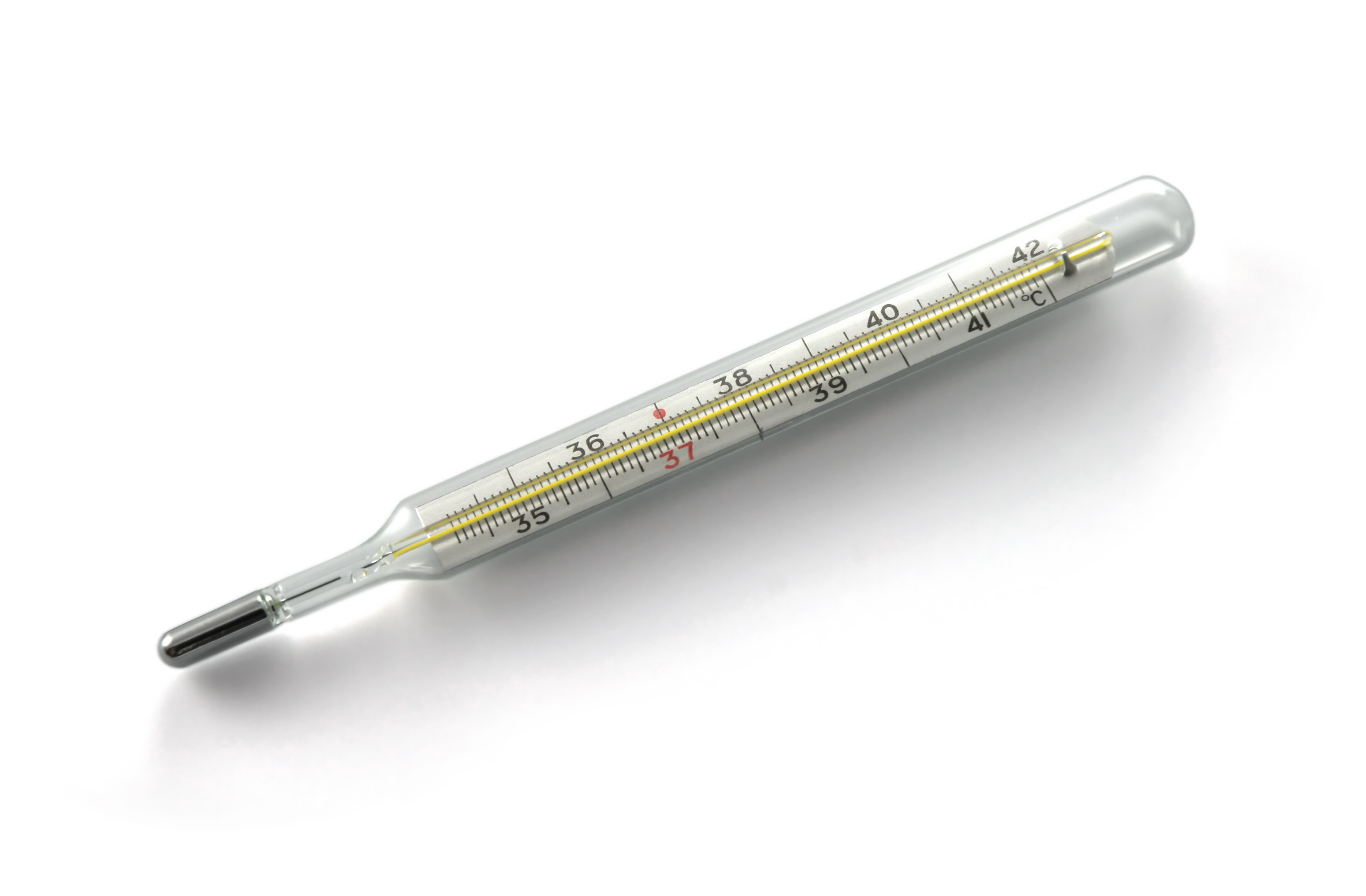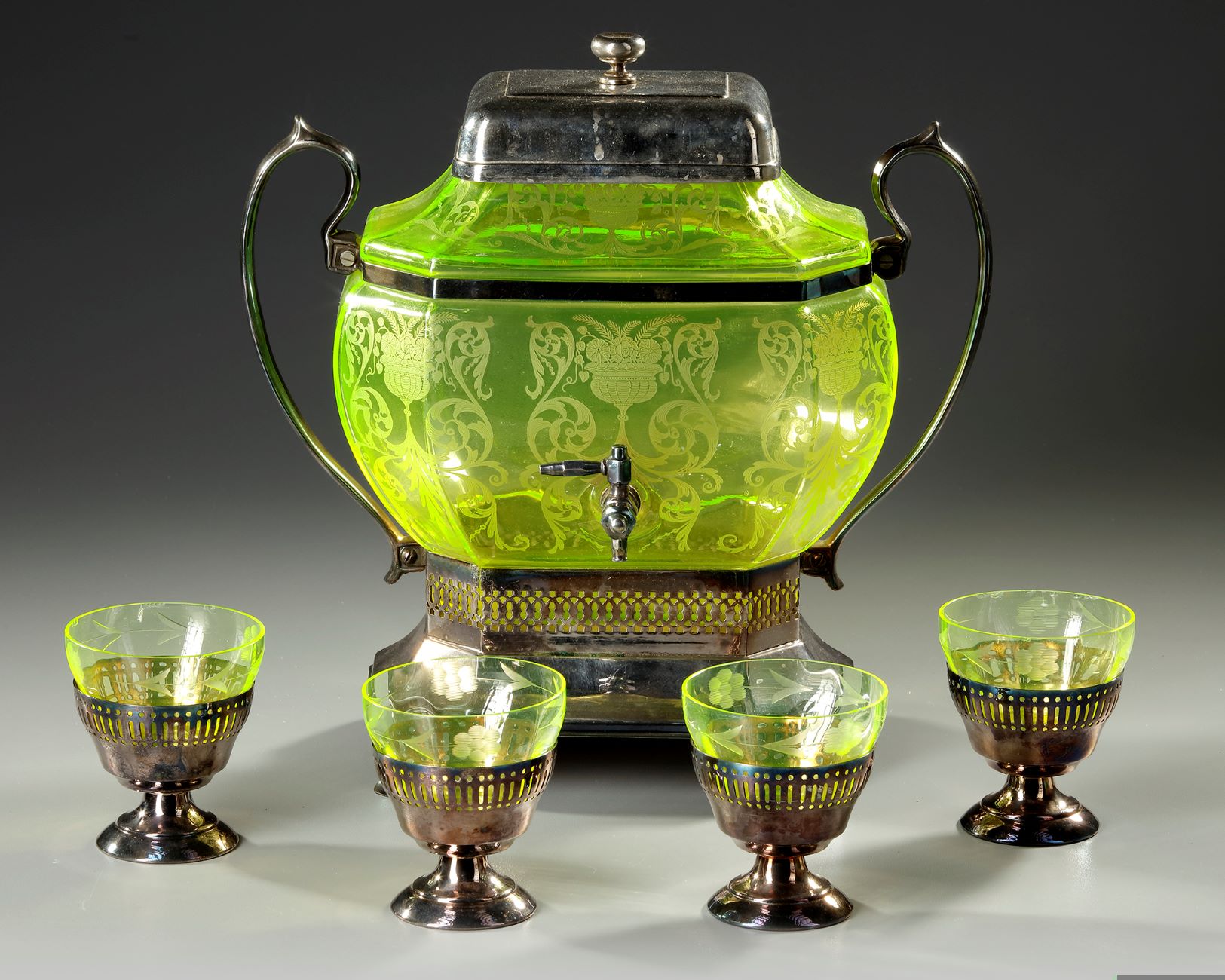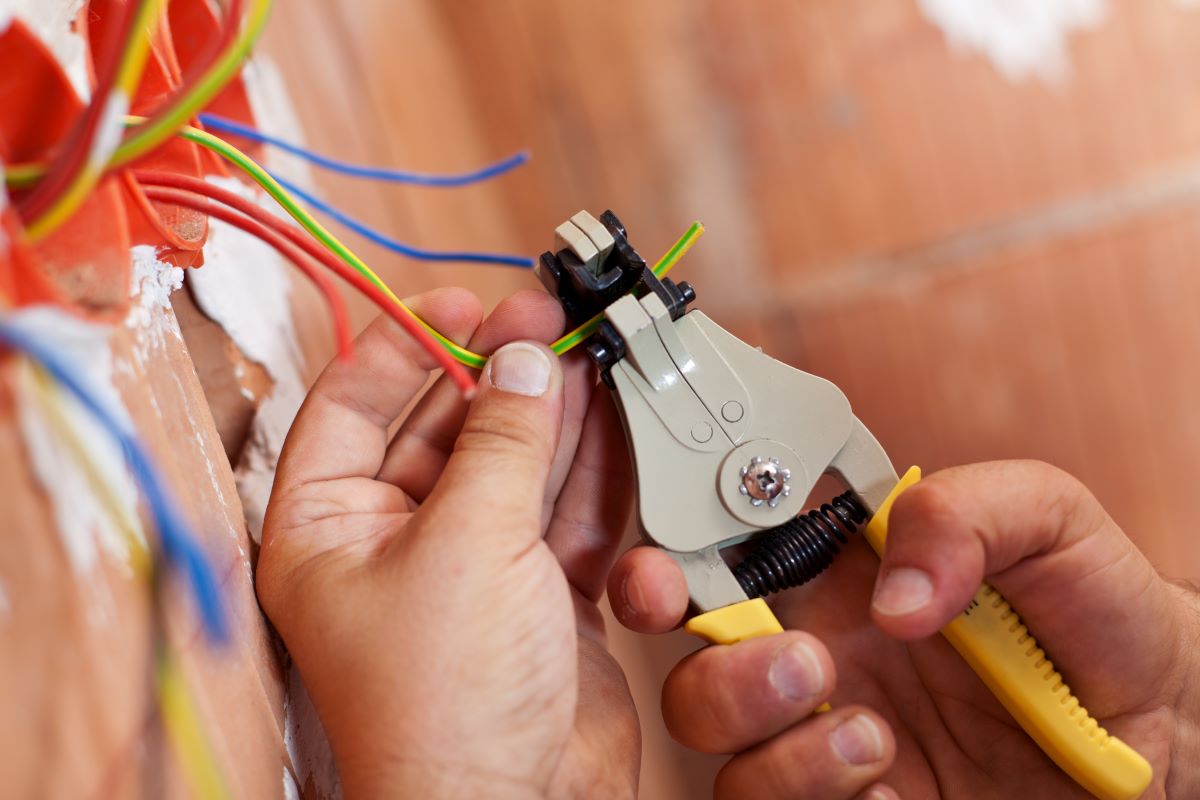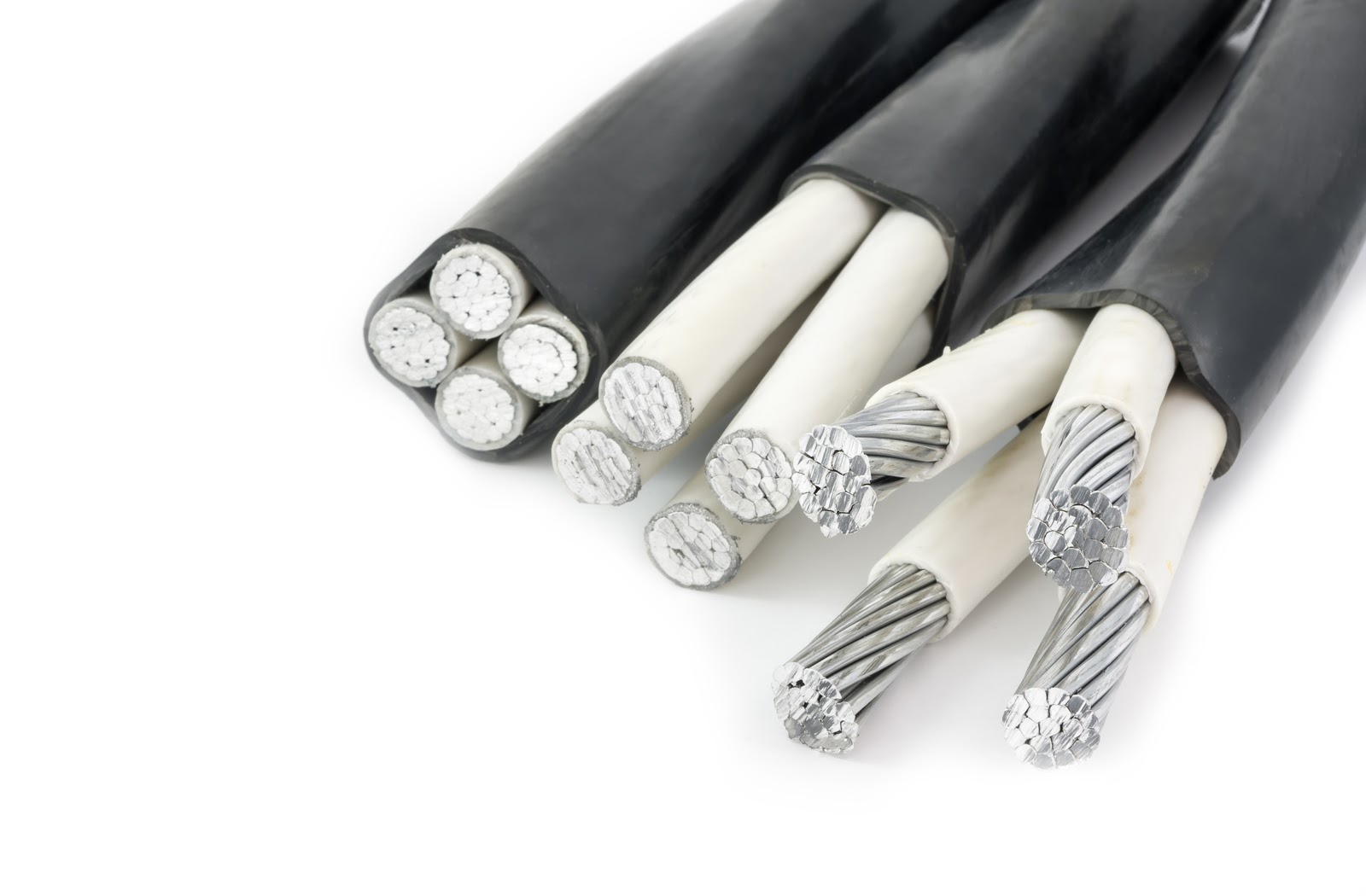Home>Furniture & Design>Interior Design Trends>Why Are Glass Thermometers Rarely Used Today


Interior Design Trends
Why Are Glass Thermometers Rarely Used Today
Modified: February 18, 2024
Discover why glass thermometers are no longer commonly used and how this trend relates to interior design. Explore the reasons behind this shift in technology and its impact on modern living.
(Many of the links in this article redirect to a specific reviewed product. Your purchase of these products through affiliate links helps to generate commission for Storables.com, at no extra cost. Learn more)
Introduction
Glass thermometers have been a staple in temperature measurement for centuries, but their prevalence has significantly declined in recent years. This shift can be attributed to various factors, including advancements in technology, safety concerns, and the emergence of more accurate and convenient alternatives. Understanding the reasons behind the waning popularity of glass thermometers is crucial for appreciating the evolution of temperature measurement devices and the impact of modernization on traditional tools.
The transition away from glass thermometers reflects the dynamic nature of scientific and technological progress. As society continues to embrace innovation, traditional instruments such as glass thermometers are gradually being phased out in favor of more efficient and reliable alternatives. By delving into the history, limitations, and alternatives of glass thermometers, we can gain valuable insights into the evolution of temperature measurement and the factors driving this transformative shift.
The subsequent exploration of the history of glass thermometers will shed light on their significance in scientific and medical contexts, providing a foundation for understanding their widespread use in the past. Additionally, examining the limitations of glass thermometers will underscore the challenges and drawbacks associated with these traditional devices, paving the way for a deeper appreciation of the need for more advanced solutions. Finally, the discussion of alternatives to glass thermometers will highlight the diverse array of modern temperature measurement tools that have superseded their traditional counterparts.
As we embark on this journey through the evolution of temperature measurement, it becomes evident that the decline of glass thermometers is not merely a consequence of technological innovation, but also a reflection of society's relentless pursuit of precision, safety, and convenience. By unraveling the reasons behind the rarity of glass thermometers in contemporary settings, we can gain a comprehensive understanding of the forces shaping the landscape of temperature measurement and the enduring quest for superior tools to meet evolving needs.
Key Takeaways:
- Glass thermometers are becoming rare due to safety concerns, slow response time, and limited precision. Modern alternatives like digital and infrared thermometers offer faster, safer, and more accurate temperature readings.
- The history of glass thermometers dates back to the 17th century, but their fragility, mercury hazard, and environmental impact have led to their decline. Digital, infrared, and disposable temperature indicators have revolutionized temperature measurement, offering safer, more precise, and convenient alternatives.
Read more: How To Use A Glass Thermometer
History of Glass Thermometers
The history of glass thermometers traces back to the 17th century when the Italian physicist Galileo Galilei crafted the first rudimentary thermometer using a tube filled with air and water. However, it was the pioneering work of Daniel Gabriel Fahrenheit and Anders Celsius that laid the foundation for the modern glass thermometer as we know it today. Fahrenheit's introduction of the mercury-in-glass thermometer in the early 18th century revolutionized temperature measurement, offering a more precise and reliable method compared to its predecessors.
The design of glass thermometers typically consists of a glass tube filled with mercury or colored alcohol, with a calibrated scale for temperature readings. This simple yet ingenious concept propelled glass thermometers into widespread use across various fields, including scientific research, industrial applications, and healthcare.
Throughout the centuries, glass thermometers became indispensable tools for monitoring body temperature, conducting experiments, and regulating industrial processes. Their versatility and ease of use contributed to their enduring popularity, solidifying their status as a symbol of scientific advancement and precision.
The historical significance of glass thermometers is further underscored by their pivotal role in pivotal scientific discoveries and medical breakthroughs. From the meticulous temperature observations of naturalists during the Age of Enlightenment to the crucial role of thermometers in the development of the germ theory of disease, these instruments have left an indelible mark on the progress of human knowledge and understanding.
Despite their historical prominence, the widespread use of glass thermometers began to wane with the advent of digital and infrared thermometers. These modern alternatives offer greater accuracy, faster readings, and enhanced safety, marking a significant departure from the reliance on traditional glass thermometers.
The evolution of glass thermometers exemplifies the dynamic interplay between tradition and innovation, highlighting the enduring legacy of these iconic instruments while also signaling the inevitable transition toward more advanced temperature measurement technologies.
Limitations of Glass Thermometers
Glass thermometers, despite their historical significance and widespread use, are not without limitations. These drawbacks have contributed to the diminishing presence of glass thermometers in modern settings, as more advanced alternatives have emerged to address these inherent challenges.
-
Mercury Hazard: One of the most significant limitations of glass thermometers is the use of mercury as the measuring fluid. Mercury, a toxic substance, poses serious health and environmental risks if the thermometer is mishandled or accidentally broken. Exposure to mercury vapor or ingestion of mercury can lead to severe health complications, making the use of glass thermometers in certain environments a safety concern.
-
Fragility: Glass thermometers are inherently fragile, rendering them susceptible to breakage and damage. The delicate nature of the glass tube containing the measuring fluid makes these instruments vulnerable to accidental impacts or mishandling. This fragility not only compromises the longevity of glass thermometers but also poses a safety risk due to the potential release of mercury in the event of breakage.
-
Slow Response Time: Traditional glass thermometers exhibit a relatively slow response time when compared to modern digital or infrared thermometers. The process of waiting for the mercury or alcohol to reach equilibrium with the surrounding temperature can be time-consuming, especially in scenarios where rapid temperature measurements are essential.
-
Limited Precision: Glass thermometers may have limitations in terms of precision, particularly when compared to digital thermometers. The readability of the scale and the potential for human error in interpreting measurements can impact the accuracy of temperature readings obtained from glass thermometers.
-
Environmental Considerations: The use of mercury in glass thermometers raises environmental concerns, particularly in the context of disposal. Proper disposal of glass thermometers containing mercury is essential to prevent environmental contamination, adding an extra layer of complexity and responsibility in their usage and maintenance.
These limitations collectively underscore the challenges associated with traditional glass thermometers, prompting the need for more advanced and safer alternatives. The emergence of digital and infrared thermometers has addressed many of these limitations, offering enhanced safety, precision, and efficiency in temperature measurement, thereby reshaping the landscape of temperature monitoring and paving the way for the gradual obsolescence of glass thermometers.
Alternatives to Glass Thermometers
The evolution of temperature measurement has ushered in a diverse array of alternatives to traditional glass thermometers, each offering unique advantages that have contributed to the gradual displacement of their conventional counterpart. The emergence of digital thermometers, infrared thermometers, and disposable temperature indicators has revolutionized temperature monitoring across various domains, presenting compelling alternatives that address the limitations of glass thermometers while introducing unprecedented levels of accuracy, efficiency, and safety.
Digital Thermometers
Digital thermometers have emerged as one of the most prominent alternatives to glass thermometers, offering rapid and precise temperature readings in diverse settings. These devices utilize electronic sensors to detect and measure temperature, providing digital displays of the readings for easy interpretation. The elimination of mercury and glass components in digital thermometers mitigates the associated health and environmental risks, making them safer and more environmentally friendly. Furthermore, the rapid response time and high degree of accuracy exhibited by digital thermometers have positioned them as indispensable tools in clinical, industrial, and domestic applications.
Read more: When Can Glass Thermometers Be Used
Infrared Thermometers
Infrared thermometers have gained widespread popularity due to their non-contact nature and ability to measure temperature from a distance. By capturing thermal radiation emitted by an object, infrared thermometers offer swift and hygienic temperature measurements without physical contact, making them ideal for applications where traditional thermometers may be impractical or unsuitable. The versatility and precision of infrared thermometers have rendered them indispensable in various industries, including food processing, HVAC, and medical diagnostics, where non-invasive temperature monitoring is essential.
Disposable Temperature Indicators
Disposable temperature indicators represent a revolutionary approach to temperature monitoring, offering single-use, color-changing labels or strips that provide visual indications of temperature variations. These indicators are designed to offer convenience and simplicity, making them particularly valuable in scenarios where frequent temperature monitoring is required, such as in healthcare settings and food storage facilities. The disposable nature of these indicators eliminates the need for maintenance and calibration, while their intuitive color-based temperature readings facilitate quick assessments without the need for specialized training or interpretation.
The proliferation of these advanced alternatives underscores the transformative impact of modern technology on temperature measurement, signaling a paradigm shift away from traditional glass thermometers. The superior safety, precision, and convenience offered by digital thermometers, infrared thermometers, and disposable temperature indicators have redefined the standards of temperature monitoring, paving the way for a future where the reliance on glass thermometers becomes increasingly rare.
The evolution of temperature measurement has ushered in a diverse array of alternatives to traditional glass thermometers, each offering unique advantages that have contributed to the gradual displacement of their conventional counterpart. The emergence of digital thermometers, infrared thermometers, and disposable temperature indicators has revolutionized temperature monitoring across various domains, presenting compelling alternatives that address the limitations of glass thermometers while introducing unprecedented levels of accuracy, efficiency, and safety.
Digital Thermometers
Digital thermometers have emerged as one of the most prominent alternatives to glass thermometers, offering rapid and precise temperature readings in diverse settings. These devices utilize electronic sensors to detect and measure temperature, providing digital displays of the readings for easy interpretation. The elimination of mercury and glass components in digital thermometers mitigates the associated health and environmental risks, making them safer and more environmentally friendly. Furthermore, the rapid response time and high degree of accuracy exhibited by digital thermometers have positioned them as indispensable tools in clinical, industrial, and domestic applications.
Read more: When Can Glass Thermometers Be Used
Infrared Thermometers
Infrared thermometers have gained widespread popularity due to their non-contact nature and ability to measure temperature from a distance. By capturing thermal radiation emitted by an object, infrared thermometers offer swift and hygienic temperature measurements without physical contact, making them ideal for applications where traditional thermometers may be impractical or unsuitable. The versatility and precision of infrared thermometers have rendered them indispensable in various industries, including food processing, HVAC, and medical diagnostics, where non-invasive temperature monitoring is essential.
Disposable Temperature Indicators
Disposable temperature indicators represent a revolutionary approach to temperature monitoring, offering single-use, color-changing labels or strips that provide visual indications of temperature variations. These indicators are designed to offer convenience and simplicity, making them particularly valuable in scenarios where frequent temperature monitoring is required, such as in healthcare settings and food storage facilities. The disposable nature of these indicators eliminates the need for maintenance and calibration, while their intuitive color-based temperature readings facilitate quick assessments without the need for specialized training or interpretation.
The proliferation of these advanced alternatives underscores the transformative impact of modern technology on temperature measurement, signaling a paradigm shift away from traditional glass thermometers. The superior safety, precision, and convenience offered by digital thermometers, infrared thermometers, and disposable temperature indicators have redefined the standards of temperature monitoring, paving the way for a future where the reliance on glass thermometers becomes increasingly rare.
Conclusion
The gradual rarity of glass thermometers in contemporary usage reflects a profound transformation in the field of temperature measurement. The historical significance of glass thermometers, from their inception in the 17th century to their widespread adoption as indispensable tools in scientific, industrial, and medical contexts, underscores their enduring legacy as symbols of precision and advancement. However, the limitations inherent in glass thermometers, including the use of mercury, fragility, slow response time, limited precision, and environmental concerns, have paved the way for the emergence of more advanced and safer alternatives.
The evolution of temperature measurement has witnessed the ascendancy of digital thermometers, infrared thermometers, and disposable temperature indicators, each offering distinct advantages that have reshaped the landscape of temperature monitoring. Digital thermometers, with their rapid response time, high precision, and elimination of mercury, have become indispensable in clinical, industrial, and domestic settings. Infrared thermometers, renowned for their non-contact nature and versatility, have found widespread application in diverse industries, revolutionizing temperature measurement practices. Additionally, disposable temperature indicators have introduced a paradigm shift in temperature monitoring, offering simplicity, convenience, and single-use functionality, particularly valuable in healthcare and food storage facilities.
The transition away from glass thermometers signifies a broader societal shift towards embracing innovation, precision, and safety in temperature measurement. The relentless pursuit of more efficient, accurate, and environmentally friendly temperature monitoring solutions has propelled the ascendancy of modern alternatives, relegating traditional glass thermometers to a rarity in contemporary usage. This transformative shift underscores the dynamic interplay between tradition and innovation, highlighting the enduring legacy of glass thermometers while heralding the era of advanced temperature measurement technologies.
As we bid farewell to the era of ubiquitous glass thermometers, we embark on a future defined by the unparalleled precision, safety, and convenience offered by digital, infrared, and disposable temperature measurement devices. The rarity of glass thermometers serves as a testament to the enduring quest for superior tools to meet evolving needs, encapsulating the essence of progress and innovation in the realm of temperature measurement. While the legacy of glass thermometers endures in the annals of scientific history, the future belongs to the cutting-edge technologies that have redefined the standards of temperature monitoring, ushering in an era where accuracy, efficiency, and safety converge to shape the future of temperature measurement.
Frequently Asked Questions about Why Are Glass Thermometers Rarely Used Today
Was this page helpful?
At Storables.com, we guarantee accurate and reliable information. Our content, validated by Expert Board Contributors, is crafted following stringent Editorial Policies. We're committed to providing you with well-researched, expert-backed insights for all your informational needs.














0 thoughts on “Why Are Glass Thermometers Rarely Used Today”